 W
WThe Battle of Akhaltsikhe may refer to one of the following:A battle under the walls of Akhaltsikhe during the Russo-Turkish War, 1828-1829 on August 9 between 9,000 Russians under Field-Marshal Paskevich and 30,000 Turks under Kios-Mahomet-Pasha. The Russians were victorious. Defense of the same fortress by a Russian garrison under General Nicholas Muravyov from a 20,000 Turkish force on March 4, 1829 during the same conflict. A battle between 7,000 Russian troops consisting mostly of Georgian irregular cavalrymen under Prince Ivan Malkhazovich Andronnikov (Andronikashvili) and 18,000 Turks under Ali-Pasha during the Crimean War, on November 12, 1853. The Russians checked Turkish offensive in Transcaucasia and made them retreat to Kars.
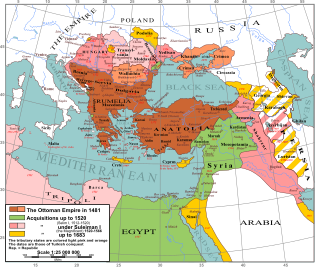 W
WThe 1534 capture of Baghdad by Suleiman the Magnificent of the Ottoman Empire from the Safavid dynasty under Tahmasp I was part the Ottoman–Safavid War of 1532 to 1555, itself part a series of Ottoman–Persian Wars. The city was taken without resistance, the Safavid government having fled and leaving the city undefended. Baghdad's capture was a significant achievement given its mastery of the Tigris and Euphrates rivers and their international and regional trade. It represented, along with the fall of Basra in 1546, a significant step towards eventual Ottoman victory and the procurement of the lower Mesopotamia, the mouths of the Euphrates and Tigris rivers, opening a trading outlet into the Persian Gulf. The Ottomans wintered there until 1535, overseeing the reconstruction of Sunni and Shia religious shrines and agricultural irrigation projects. Suleiman returned to Constantinople, leaving a strong garrison force. Over the next few decades, the Ottomans solidified their control over the region, incorporating it into their empire until it was recaptured by the Persians in 1623.
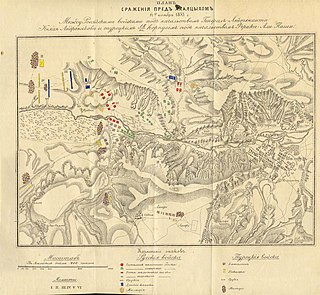 W
WThe Battle of Akhaltsikhe occurred on 24 November 1853 during the Crimean War when a Russian force of 7,000 defeated a Turkish army of 18,000 men near the Akhaltsikhe fortress in the Caucasus.
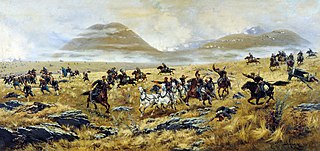 W
WThe Battle of Aladzha was a key battle of the Caucasian campaign of the Russo-Turkish War of 1877-78. Russian troops broke through the defenses of the Turkish troops on the Aladzhin heights, which allowed them to seize the initiative and begin the siege of Kars.
 W
WThe Battle of Gorni Dubnik was a battle in the Russo-Turkish War on 24 October 1877. In an effort to reduce the fortress of Pleven quicker, Russian forces began targeting garrisons along the Ottoman supply and communications route. A significant garrison had been reduced at the Battle of Lovcha in September. General Joseph Vladimirovich Gourko was called up from the Shipka Pass area to deal with more of the garrisons protecting Pleven.
 W
WThe Battle of Jeddah was fought in 1813 at the west Arabian port city of Jeddah as part of the Ottoman–Saudi War. The Ottoman army of Tusun Pasha arrived from Medina, and a new army led by his father Mohammed Ali Pasha arrived from Egypt. The combined forces attacked and recaptured the city of Jeddah immediately, and the Ottoman-appointed Sharif was sent to Constantinople as a prisoner. A few days later, these combined forces captured Mecca itself, and Sultan Mahmud II restored Ghalib Efendi as the Sharif of Hejaz. From then on, the region of Hejaz again became a vassal to the Ottomans.
 W
WThe Battle of Khresili was fought in 1757, between the armies of the Kingdom of Imereti and the Ottoman Empire. The king of Imereti Solomon I defeated the Turkish army. The battle took place on December 14, 1757. Solomon I established a strong monarchy and unified western Georgia. His actions stained the relations between the Georgian King and Ottoman Empire. The Ottomans, in particular, wanted to stop Solomon's struggle against slavery. The Ottomans were in an alliance with rebellious Georgian nobles, one such example was Levan Abashidze, who was fighting against the King of Imereti. Abashidze arrived in Akhaltsikhe and led an Ottoman army to the Kingdom of Imereti. Solomon enticed them into a strategically adroit place near Khresili and decisively defeated them.
 W
WThe Battle of Kulevicha, also known as the Battle of Kulevcha or Kulewtscha, was fought during the Russo-Turkish War, 1828-1829 on 11 June 1829 between Russia and the Ottoman Empire.
 W
WThe Battle of Larga was fought between 65,000 Crimean Tatars cavalry and 15,000 Ottoman infantry under Kaplan Girey against 38,000 Russians under Field-Marshal Rumyantsev on the banks of the Larga River, a tributary of the Prut River, in Moldavia, for eight hours on 7 July 1770. It was fought on the same day as Battle of Chesma, a key naval engagement of the Russo-Turkish War, 1768-1774.
 W
WOttoman return of Mecca 1813 also known as the Battle of Mecca happened several days after the recapture of Jeddah during the Ottoman–Saudi War. Diriyah's army and its 1,000 men in Mecca surrendered to Muhammad Ali of Egypt and Tusun Pasha, who recaptured the city for the Ottoman Empire.
 W
WThe Battle of Medina took place in 1812. Following the Battle of Al-Safra, Tusun's forces begun to deal with rebel tribes around Medina while military supplies were moved to Yanbu from Egypt. Mohammed Ali Pasha sent Ahmet Aga with 10,000 men to help Tusun's forces to re-capture Medina, this army successfully took the city in November 1812, killing about 600 Saudi fighters.
 W
WThe Battle of Modon took place in August 1500 during the war of 1499–1503 between the Ottoman Empire and the Republic of Venice. The Ottomans, who had won the Battle of Zonchio the previous year, were again victorious under Admiral Kemal Reis.
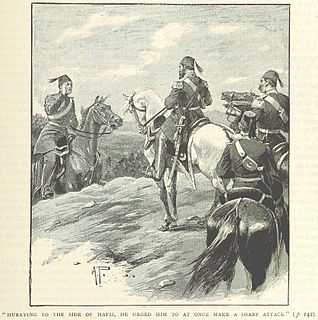 W
WThe Battle of Nezib or Battle of Nisib or Battle of Nizib was fought on 24 June 1839 between Egypt and the Ottoman Empire. The Egyptians were led by Ibrahim Pasha, while the Ottomans were led by Hafiz Osman Pasha, with Helmuth von Moltke the Elder playing an advisory role, in command of the Ottoman artillery.
 W
WThe Battle of Nikopol, or Nicopolis, was one of the early battles of the Russo-Turkish War (1877–1878). As the Russian army crossed the Danube River, they approached the fortified city of Nikopol (Nicopolis). The Turkish high command sent Osman Pasha with the troops from Vidin to oppose the Russians' crossing of the Danube. Osman's intentions were to reinforce and defend Nikopol. However, the Russian IX Corps under General Nikolai Kridener reached the city and bombarded the garrison into submission before Osman could arrive. He instead fell back to Plevna. With the Nikopol garrison eliminated, the Russians were free to march on to Plevna.
 W
WThe Battle of Plovdiv, or Battle of Philippopolis, was one of the final battles of the 1877-1878 Russo-Turkish War.
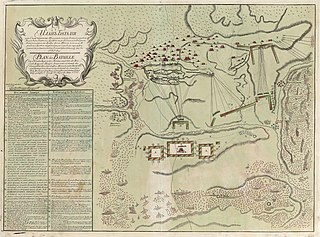 W
WThe Battle of Stavuchany was a battle between the Russian and Ottoman armies, which took place on August 17(28) of 1739 during the Russo-Turkish War of 1735-1739.
 W
WThe Battle of Svistov was a battle of the Russo-Turkish War of 1877–1878. It was fought between the Ottoman Empire and Imperial Russia on 26 June 1877. It occurred when Russian general Mikhail Ivanovich Dragomirov crossed the Danube River in a fleet of small boats and attacked the Turkish fortress. The next day, Mikhail Skobelev attacked, forcing the Turkish garrison to surrender. In result, the Russian military became ready to attack Nikopol.
 W
WThe Battle of Urmia was fought near Lake Urmia in north-western Persia between the Safavid and Ottoman empires and resulted in a decisive Safavid victory. The Ottomans were fooled into an ambush where many of them were killed or captured in an encirclement manoeuvre. Over the next three years all of western and northern Persia was recaptured and the Safavids even re-established their suzerainty over their former vassals in the Caucasus.
 W
WThe Battle of Bitlis refers to a series of engagements in the summer of 1916 for the town of Bitlis and to a lesser extent nearby Moush, between Russian Imperial forces and their Ottoman counterparts. The town was the last stronghold of the Ottoman Empire preventing the Russians from entering Anatolia and Mesopotamia.
 W
WThe Battle of Obreška was fought on 10 September 1565 between the Ottoman forces of Mustafa Pasha Sokolović, Beylerbey of Livno, and the Germanic and Croatian forces led by Croatian ban Petar Erdody. The battle was a part of the Croatian–Ottoman wars and Ottoman–Habsburg wars between the Ottoman Empire and the Habsburg Monarchy.
 W
WThe Battle of Brest was fought on 19 July 1592 between the Ottoman forces of Hasan Pasha Predojević, Beglerbeg of Bosnia, and the Germanic and Croatian forces led by Tamás Erdődy, Ban of Croatia. The battle was a part of the Croatian–Ottoman wars and Ottoman–Habsburg wars between the Ottoman Empire and the Habsburg Monarchy.
 W
WThe Capture of Fez occurred in 1576 at the Moroccan city of Fez, when an Ottoman Empire force from Algiers supported the Moroccan sultan Abd al-Malik in gaining the throne of Morocco against his nephew and rival claimant Mulay Muhammed al-Mutawakkil. About 10,000 Ottoman soldiers participated in the campaign.
 W
WThe Capture of Tunis in 1569 was a campaign led by Uluç Ali to conquer Tunis.
 W
WThe Battle of Dubravnica was fought in the summer of 1380 or December 1381, on the Dubravnica River near Paraćin in today's central Serbia, between the Serbian forces of Prince Lazar of Serbia led by commanders Vitomir and Crep and the invading Ottoman Turks of Sultan Murad I. Vitomir and Crep were the regional lords, and one of their fortresses, Petrus, was in the vicinity of the battle.
 W
WThe Battle of Erzurum was a military engagement fought between the Ottoman Empire and the Russian Empire, during the Russo-Turkish War of 1877-1878. The battle was fought on 8-9 November 1877 on the Ottoman territory and ended with the Russians withdrawing to instead besiege Kars, which fell afterwards.
 W
WThe Battle of Jajce (1518) was fought in January 1518 between the Ottoman forces of Husrev Beg, Beylerbey of Bosnia Eyalet, and the Hungarian and Croatian forces led by Croatian Ban Petar Berislavić. The battle was a part of the Croatian–Ottoman wars and Ottoman–Hungarian wars.
 W
WThe Battle of Kars was a decisive Russian victory over the Ottoman Empire during the Russo-Turkish War (1877–1878).
 W
WThe Battle of Kirk Kilisse or Battle of Kirkkilise or Battle of Lozengrad was part of the First Balkan War between the armies of Bulgaria and the Ottoman Empire. It took place on 24 October 1912, when the Bulgarian army defeated an Ottoman army in Eastern Thrace.
 W
WThe Battle of Kizil-tepe was fought on August 25, 1877, between the Russian Empire and the Ottoman Empire. The Russian were attempting to besiege Kars. The Ottomans, vastly superior in numbers, successfully lifted the siege.
 W
WDuring the Gallipoli campaign in 1915, several battles were fought near the village of Krithia which is from the Greek "Krithari" which means Barley. The village was an objective of the first day of the landing, 25 April 1915. Over the following months, invading British Empire and French troops, who had landed near Cape Helles at the end of the peninsula, made several attempts to capture the village. It was never reached; the Turkish defenders successfully repulsed every assault.
 W
WThe Second Battle of Kut was fought on 23 February 1917, between British and Ottoman forces at Kut, Mesopotamia.
 W
WThe Battle of Măcin, Battle of Maçin, Battle of Matchin or Battle of Matschin was a battle of the Russo-Turkish War (1787–1792) fought on July 9, 1791, between the Ottoman Empire and the Russian Empire. The Russian army of 30,000 was commanded by Prince Nicholas Repnin, whereas the Turks, numbering about 80,000 men, were led by Koca Yusuf Pasha.
 W
WThe siege of Negroponte was fought between the forces of the Ottoman Empire, led by Sultan Mehmed II in person, and the garrison of the Venetian colony of Negroponte (Chalcis), the capital of the Venetian possession of Euboea in Central Greece. It lasted for almost a month, and despite great Ottoman casualties ended in the capture of the city and the island of Euboea by the Ottomans.
 W
WThe 1835–1858 revolt in Ottoman Tripolitania began at the end of the Karamanli rule, in which tribal leaders such as 'Abd al-Jalil and Ghuma al-Mahmudi revolted against central Ottoman rule, which ended after Ghuma's death in 1858.
 W
WThe siege of Santa Maura took place on 21 July – 6 August 1684 between the forces of the Republic of Venice and the Ottoman Empire, and was the opening battle of the Sixth Ottoman–Venetian War.
 W
WThe Second Battle of Kalaa of the Beni Abbes took place in October 1559. It opposed the regency of Algiers and its ally of circumstance the Kingdom of Kuku to the Kingdom of Ait Abbas.
 W
WThe siege of Kars took place during the Russo-Turkish War of 1828–1829. A Russian army, led by General Ivan Paskevich, successfully took Kars in Turkish Armenia from the Ottomans. The battle itself lasted three days, from 20 to 23 June 1828.
 W
WThe siege of the Acropolis in 1821–1822 involved the siege of the Acropolis of Athens by the Greek rebels, during the early stages of the Greek War of Independence.
 W
WThe siege of the Acropolis in 1826–1827 during the Greek War of Independence involved the siege of the Acropolis of Athens, the last fortress still held by the Greek rebels in Central Greece, by the forces of the Ottoman Empire.
 W
WThe siege of Varna was an episode during the Russo-Turkish War, 1828–1829.
 W
WThe Battle of Slunj was fought on 26 October 1584 between the Ottoman forces of the Bosnian Beglerbeg, Ferhad Pasha Sokolović, and Germanic and Croatian forces led by Jobst Joseph von Thurn and Tamás Erdődy, the Ban of Croatia, that ambushed the Ottoman army near the town of Slunj. The battle was a part of the Croatian–Ottoman wars and Ottoman–Habsburg wars between the Ottoman Empire and the Habsburg Monarchy. Ottoman troops were estimated at between 8-10,000 men, and the army of Thurn and Erdödy consisted of 1,330 cavalry and 700 infantry. The battle resulted in a crushing defeat for the Ottoman forces.
 W
WBattle of Sulukh was fought between Armenian fedayis and Turkish forces on 27 May 1907. It is most notable for being the conflict that led to the death of Gevorg Chavush.
 W
WThe Battle of Šumatovac or Battle of Aleksinac happened in 1876, in central Serbia, near the town of Aleksinac. The outnumbered Serbian army, led by colonel Kosta Protić, won a tactical victory in this defensive battle against the Ottoman forces. In a major tactical blunder the Ottomans spent a whole day frontally attacking a well-entrenched pentagonal redoubt defended by two Serbian battalions armed with muzzle-loading rifles and 6 cannons supported by about 40 additional artillery pieces positioned on the overlooking hills. The Ottomans finally retreated towards the end of the day having lost 500 killed and 1,500 wounded and captured. The Serbian army did not press the advantage with a counterattack, however so it ended up as just a tactical success.